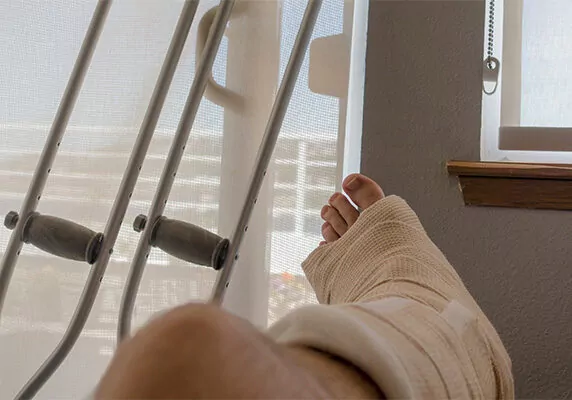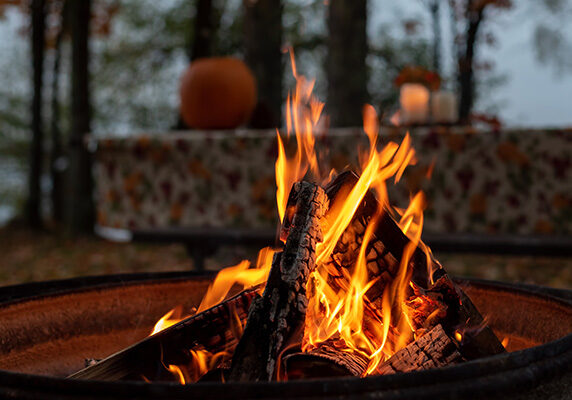With hunting seasons opening across the United States, millions of Americans are taking to the field, and most will return home safely with stories of the pursuit and the successful taking of game. But thousands of hunters this year are expected to be injured in hunting accidents, with an unfortunate few losing their lives.
While many hunting accidents are outside of anyone’s control, this is not always the case. Negligence often plays a factor in hunting accidents, which can leave parties liable for damages.
Many hunting accidents do not involve firearms or other weapons, but rather falls from treestands, or other causes.
Many critics and outsiders believe that hunting rifles and other firearms represent the greatest threat to the safety of hunters.
In reality, while firearms are involved in some hunting accidents, they represent a small portion of hunting accidents, with hunting rifles being a mere fraction of overall firearms deaths and injuries across the US.
One of the most common accidents among deer hunters is falling from a treestand. Popularized among white-tailed deer hunters in the 1970s, today the vast majority of firearm and archery hunters employ treestands to gain a vantage point over their targets, at heights that can exceed thirty feet. Falls from these heights can result in serious injuries, including broken bones and catastrophic head trauma.
Falls often occur as hunters climb into or descend from their perches. Roughly half of all falls suffered by the hunting population involve treestands. The time of day may play a factor, with over a third of all treestand falls occurring shortly after dusk, where minimal available light could cause hunters to miss steps or hand holds. Structural defects are also a concern, with broken safety straps and steps among the common points of failure.
However, individual negligence is also a significant factor, as the safe use of treestands requires additional safety equipment such as safety harnesses and fall restraints. But studies have shown that many deer hunters do not use these additional safety measures when using tree stands.
One study focused on hunters in Wisconsin showed that roughly one third of bow-hunters, and only 23% of all firearm-hunters reported using safety devices with their treestands on a constant basis. Some hunters reported not owning safety harnesses or fall restraints.
The lack of safety equipment has had notable and lasting consequences for fall victims. A 2010 study on hunters in Ohio determined that 81% of treestand falls resulted in debilitating spinal fractures.
While individual negligence plays a major role in these incidents, treestand manufacturers have been held liable for treestand falls. New Jersey-based treestand manufacturer Primal Vantage Co. was found partially liable for the injuries sustained by a hunter who fell from one of their treestands.
Due to their lack of safety harness, and failure to inspect the treestand before use, the victim was found 50% liable for their injuries, cutting their $18.5 million award in half. But the jury unanimously agreed that the company failed to warn treestand users of the risks associated with their product, and had created an “unreasonably dangerous product.”
Animal attacks are also a serious danger for hunters, and a potential source for liability.
Wild animals can respond unpredictably to the presence of people. Some may flee upon seeing a hunter approach. Others may become territorial and aggressive. Even animals that are traditionally non-aggressive may attack under the right circumstances.
The 2019 deer hunting season has already claimed at least one life via an animal attack. A 66-year-old Arkansas man died after sustaining serious injuries during a deer hunt in late October 2019. The victim reportedly shot and wounded a buck, but was attacked by it as they approached to confirm the animal was dead. Suffering from multiple puncture wounds from the deer’s antlers, the hunter was able to call for assistance, but eventually succumbed to medical complications.
The actions of wild animals cannot be readily controlled. But there have been instances where landowners have been held liable for negligence that led up to an attack.
If it can be proven that the landowner knew of dangerous animals on the property, the animals could be described as a hidden hazard that would be impossible for visitors to identify before the attack began, and nothing was done to warn or protect the victim from attack, they may be liable for the attack.
While efforts to educate hunters on firearms safety have improved, weapons still pose a deadly threat.
In September 2019, a 17-year-old hunter was shot in Brunswick, Georgia by a member of his own deer hunting party. The victim had entered an area with limited visibility, and was shot by another hunter who believed that the signs of movement indicated the presence of a deer. The victim was rushed to an ambulance waiting at a local gas station, but died after being transferred to an area hospital.
The shooting serves an example of how quickly a firearm can be misused by inexperienced parties in the middle of a hunt. Had the shooter properly identified their target before firing, the accident could have been avoided.
One of the greatest dangers for hunters using firearms is the act of firing while turning to face a target, or “swinging on game.” This was famously demonstrated by Vice President Dick Cheney, who was hunting with an associate in Texas when he turned to fire on a quail that had been flushed out from hiding. A spray of birdshot struck his fellow hunter non-fatally in the face, neck, and chest, resulting in ongoing complications from the pellets that remained embedded in his body.
Despite these examples, hunters shooting other hunters by accident is far less common than other injuries. Efforts to educate hunters of all ages on the basic of firearms safety have produced tangible results. Statistically, accidental or deliberate shootings during a hunt are far less common than other firearms-related injuries.
While accidents can and do still happen, negligence around firearms is also a potential avenue for liability. An Oregon woman filed a $960,000 lawsuit against her late husband’s hunting partner in the wake of a fatal accidental discharge. The suit alleged that the shooter had set their .300 Weatherby Magnum rifle down on a rifle case without applying the safety. When asked to check whether the weapon was loaded the shooter picked up the weapon, which fired and killed the victim on the scene.
Gun manufacturers can also be held liable for accidental firearms discharges during a hunt.
Most hunters take maintenance of their firearms seriously, and perform their due diligence to ensure that their weapon functions properly to minimize accidental discharges. However, these types of accidents have happened despite regular care and maintenance, due to inherent design flaws, for which a manufacturer can be held liable.
Remington Arms Co. was forced to reach a settlement in 2016 with the wife of a hunter who died eight years prior. In this case, the widow’s husband died after a Model M700 rifle discharged after its safety was thumbed off. The shooter claimed they never made contact with the trigger.
Remington argued that because the gun was destroyed after the incident, it was impossible to tell whether it was modified after its manufacture in 1971. The case was initially dismissed by a district court in 2014, but the victim’s wife appealed all the way to the Eighth Circuit Court of Appeals before the company proposed the settlement.
The company eventually reached a settlement over a class action lawsuit focused on misfirings of multiple firearms in its catalogue, including the M700. The company was allegedly aware of safety flaws with their trigger mechanisms dating back to the 1940s, but refused to recall the problematic triggers, or modify the design even as complaints and lawsuits mounted.
The vast majority of hunters return home without incident, but accidents can and do happen even among experienced hunters. If you or a loved one have been affected by a hunting accident, you may be able to pursue financial compensation for your injuries. The personal injury lawyers of Penney & Associates can help you hold those responsible for the accident accountable for their actions, and help you move forward with your life.



